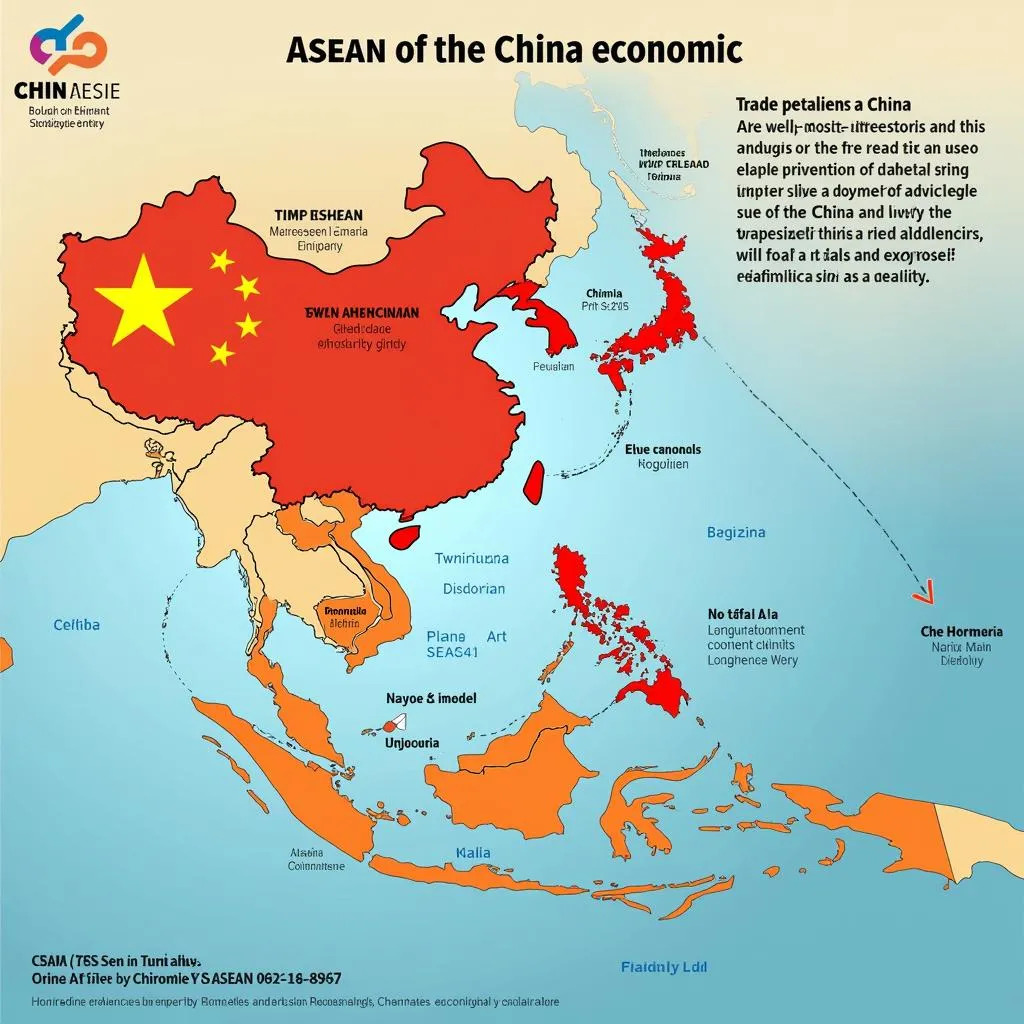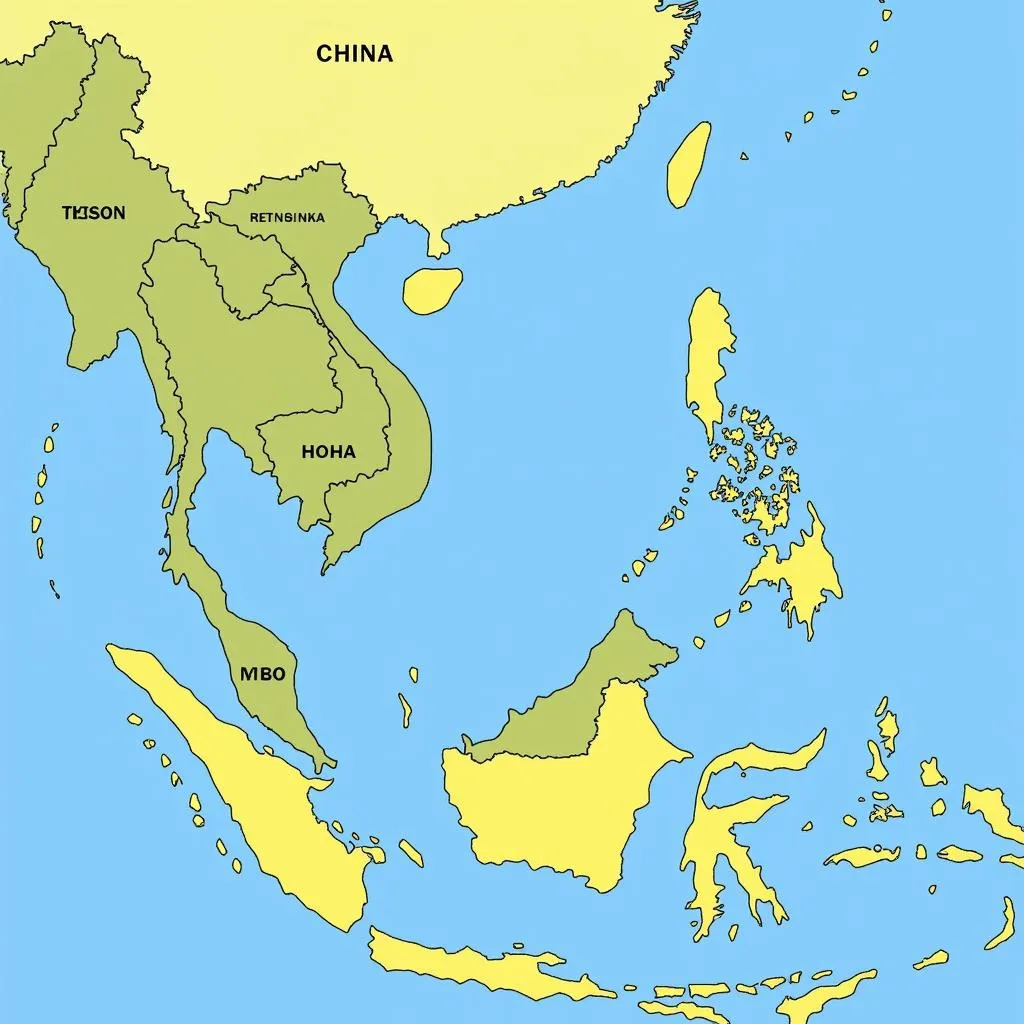The relationship between ASEAN and China is a fascinating and complex one, marked by both cooperation and competition. While both entities are economic powerhouses, their differing political systems and regional interests inevitably lead to strategic interplay, impacting the regional and global landscape. This article delves into the multifaceted relationship between ASEAN and China, exploring its historical roots, economic ties, political dynamics, and future prospects.
A Historical Tapestry: From Initial Skepticism to Strategic Partnership
The relationship between ASEAN and China has evolved dramatically since its inception in 1967. Initially, ASEAN member states were wary of China’s growing influence and its perceived territorial claims in the South China Sea. However, recognizing the mutual benefits of economic collaboration, the two entities began to forge closer ties in the 1990s. The establishment of the ASEAN-China Free Trade Area (ACFTA) in 2010 marked a significant milestone, eliminating tariffs on most goods traded between the two regions. This economic partnership fostered increased trade, investment, and tourism, solidifying a mutually beneficial relationship.
The Economic Engine: Powering Growth and Fostering Interdependence
The economic relationship between ASEAN and China is undeniably a driving force for growth and prosperity in the region. China has become ASEAN’s largest trading partner, while ASEAN is China’s third largest trading partner. The two regions are deeply intertwined through trade, investment, and infrastructure projects. China’s Belt and Road Initiative (BRI), launched in 2013, has played a pivotal role in deepening this economic partnership, funding infrastructure development across Southeast Asia, including ports, roads, and railways. This has not only boosted economic growth but also facilitated the movement of goods, people, and ideas across the region.
However, the economic relationship is not without its challenges. Concerns have been raised about China’s dominance in certain sectors, potential debt traps, and the lack of transparency in some BRI projects. ASEAN nations strive to maintain a balanced relationship, ensuring fair competition and equitable benefits for all stakeholders.
Navigating the Political Landscape: From Collaboration to Tensions
Politically, the ASEAN-China relationship has been marked by a delicate balance between cooperation and competition. Both sides have sought to foster political stability and security in the region. ASEAN’s commitment to neutrality and its focus on regional dialogue have been instrumental in managing potential conflicts, particularly in the South China Sea. The two entities have engaged in various dialogues and forums, fostering mutual understanding and building trust.
However, the issue of the South China Sea remains a significant point of contention. China’s assertive stance on its territorial claims has led to tensions with several ASEAN member states. ASEAN’s attempts to establish a Code of Conduct in the South China Sea have been met with resistance from China, highlighting the challenges of finding a mutually acceptable solution to this sensitive issue.
Future Prospects: Charting a Path of Sustainable Growth and Regional Stability
Looking ahead, the relationship between ASEAN and China holds both promise and challenges. The economic interdependence between the two regions is likely to deepen, creating opportunities for further growth and prosperity. The BRI’s continued implementation in Southeast Asia has the potential to boost infrastructure development and connectivity, fostering economic integration and creating new opportunities for regional cooperation.
However, the South China Sea issue continues to cast a shadow on the relationship. ASEAN’s efforts to maintain its neutrality and promote dialogue will be crucial in finding a lasting solution that addresses the concerns of all stakeholders. Furthermore, ASEAN must ensure that the economic benefits of cooperation are shared equitably across member states, mitigating any potential economic imbalances or dependence on China.
ASEAN and China: A Symbiotic Relationship
The relationship between ASEAN and China is a complex tapestry, woven together by economic interests, political dynamics, and strategic considerations. Both entities recognize the importance of cooperation in promoting regional stability and fostering sustainable development. While challenges remain, particularly in the South China Sea, the shared interests and intertwined destinies of ASEAN and China suggest that their relationship will continue to evolve, shaping the future of Southeast Asia and the world beyond.
FAQ
1. What is the main goal of the ASEAN-China Free Trade Area (ACFTA)?
The ACFTA’s primary goal is to eliminate tariffs on most goods traded between ASEAN and China, thereby facilitating free trade and stimulating economic growth in both regions.
2. How does the Belt and Road Initiative (BRI) impact the ASEAN-China relationship?
The BRI has significantly deepened the economic partnership between ASEAN and China by funding infrastructure development projects across Southeast Asia. This initiative has boosted economic growth and facilitated regional connectivity.
3. What are the main points of contention in the South China Sea?
The South China Sea issue arises from competing territorial claims by China and several ASEAN member states. China’s assertive stance on its claims has led to tensions, with ASEAN seeking to establish a Code of Conduct to manage these disputes.
4. What are the key challenges in the future of the ASEAN-China relationship?
The South China Sea dispute and potential economic imbalances are key challenges. ASEAN needs to maintain its neutrality, promote dialogue, and ensure that the benefits of cooperation are distributed equitably.
5. What are the potential benefits of a strong ASEAN-China relationship?
A strong ASEAN-China relationship can foster economic growth, regional stability, and increased trade and investment opportunities. The two entities can collaborate on sustainable development initiatives and address shared challenges like climate change.
6. How can the ASEAN-China relationship be further strengthened?
Strengthening the relationship requires open and transparent dialogue, mutual respect, and a commitment to finding mutually acceptable solutions to contentious issues. Building trust and fostering cooperation in key areas such as infrastructure development, trade, and environmental protection can further solidify the partnership.
7. What are the potential consequences of a strained ASEAN-China relationship?
A strained relationship could hinder economic cooperation, lead to increased tensions in the South China Sea, and undermine regional stability. It could also create opportunities for other regional powers to fill the void.
 ASEAN and China: Economic Partners
ASEAN and China: Economic Partners
 ASEAN and China: The South China Sea Dispute
ASEAN and China: The South China Sea Dispute
 ASEAN and China: A Collaborative Future
ASEAN and China: A Collaborative Future
If you have further questions or require any additional information, please contact us at:
- Phone Number: 0369020373
- Email: [email protected]
- Address: Thôn Ngọc Liễn, Hiệp Hòa, Bắc Giang, Việt Nam
Our customer service team is available 24/7 to assist you.
